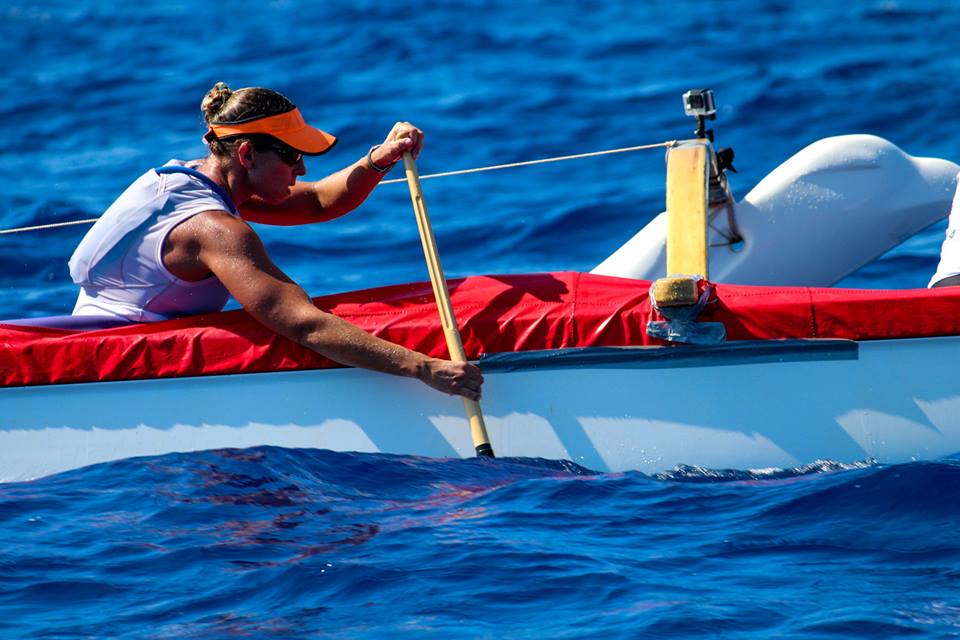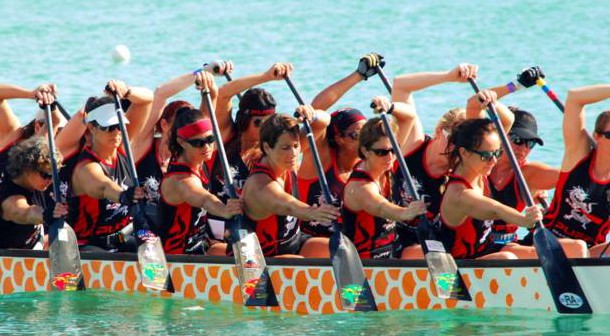Every Seat Counts | The Importance of Your Position in a Dragon Boat
Posted by Kristin Stickels on
Admit it, at times you have wondered how in the heck your coach created the latest boat layout. You wonder what put you in that particular seat. Good question! A good coach takes many things into consideration when creating the lineup. It isn’t just about boat balance.
When setting the distribution in a boat, a coach must account for the combination of all four strengths mentioned in a previous blog: physical, mental, attitudinal, and behavioral. A powerful (physically strong) paddler with low attitudinal strength (highly negative) must be balanced, even if it means by a paddler with weaker bodily strength but a soaring attitude.
NEVER question why a teammate is in a boat… their strength is needed for that boat at that time.
Different strengths are needed in the five parts of a boat. The ideal distribution of paddler will include quads that have a member with each strength in spades. A “peppy” front quad with high attitudinal strength can be supported by a “brute strength,” physically strong, front-middle, a “laser focus” mentally strong middle-middle, a “peppy” middle-back, and an attitudinally strong back-back.
| Position/ Strength | Front-front (Seats 1-2) |
Front-middle (Seats 3-4) |
Middle-middle (Seats 5-6) |
Middle-back (Seats 7-8) |
Back-back (Seats 9-10) |
| Physical | Average to Above average | Above average | Exceptional | Above average | Average to Above average |
| Mental | Above average | Above average to exceptional | Above average | Exceptional | Exceptional |
| Attitudinal | Above Average | Exceptional | Above average | Above average | Exceptional |
| Behavioral | Above average | Average | Above average | Above average | Average |
| Position/ Trait | Front-front | Front-middle | Middle-middle | Middle-back | Back-back |
| Height | Below-average to average | Average | Above average | Above average to average | Below average to average |
| Weight | Light to Middling | Middling to heavy | Heaviest | Middling to heavy | Light to middling |
| Strength-to -weight ratio | Above average to average | Above average | Exceptional | Exceptional to above average | Average to above average |
| Exceptions | Seats 1 may need exceptional strength to maintain control of boat pace | Seats 10 will need above average strength to assist the steersman, when necessary |
| Position/ Strength | Front-front | Front-middle | Middle-middle | Middle-back | Back-back |
| Physical | This quad must be able to start the motion of the boat to move forward by “pulling.” Example: pole vaulters | This quad must be able to add might to the pull led by the front-front. Example: spring loaded action | This quad must be able to both pull and push the boat forward, if the boat is moving forward well, they push, if it is sluggish at front, they compensate the pull. Example: strongman tire-flipping competitions | This quad must be able to lead the back of the boat by “pushing” the front forward. Example: Jet engines (pushing does not equal rushing the strokers) | This quad must be able to push the race start behind them by pushing the boat forward. Example: Jet engines. |
| Mental | This quad will cope with the wake, must “read” the feel of the boat, and will need tremendous self-control and sensitivity | This quad will lead the major strength phase of the boat and will have a mentally difficult task of communicating the front of the boat to the back, absorbing the shocks of rushing in the back, which is a normal occurrence | This quad will suffer the most physically. They ought to finish a race having paddled at the hardest of any other quad in terms of total strength output. Their bodies will hurt in more places. They cannot communicate that pain forward or back. | This quad will struggle to find water that is heavy and hard enough to start pushing the boat forward. They will need to vary their strokes the most to accommodate rushing water and variability in front of them. Their bodies will hurt in unusual ways. | This quad will struggle to find water that is heavy and hard enough to start pushing the boat forward. They will need to vary their strokes and often body positions to help the steersman. |
| Attitudinal | Usually “locked in.” this quad will have little variation in their routine but must be sensitive to changes behind them at all times. Mantra: Seats 1 and 2 must be the “First to serve”. | This quad will be highly variable due to weather and water conditions. They must be highly adaptable and able to “absorb” problems from the front and back and “buffer” to either. Mantra: “The lions at the gates.” | This quad must be prepared to suffer and suffer well. They should restrict physical complaints to a minimum and communicate calm, controlled, but freakish, strength. Mantra: “I am the strong silent type”. | This quad will also be highly variable, often switching with front-middle. They must also be highly adaptable to adjust themselves to problems in front in order to find the water. Mantra: “seek strength, adjust, seek strength, adjust.” | This quad will experience the most in-group variation and must be adaptable and willing to teach new people whilealso performing the roles of middle-back. Mantra: “friends in finding the water.” |
| Behavioral | This quad must be prepared to present a positive physical appearance and attitude as they are the most watched and photographed. They must have strokes that are perfectly together, foregoing individual preferences and variation. They must be cheerfully strong. | This quad can be a bit less photogenic and may have some aesthetic issues with the stroke. However, they must always have a positive attitude. | This quad must be willing to train extensively out of the boat to be as strong as possible. This quad must be “committed monsters.” | This quad is also likely to be the subject of photographs and will often be the last people in or out of the boat. They must be, above all, friendly. However, they must always have a positive attitude. | This quad must be friendly and adaptable. They must have their heads in the boat at all times, listening, responding, and helping the steersman. They must have sincere focus. |
Take the time to consider what quad you fit best in, not just physically, but mentally, attitudinally, and behaviorally. Be realistic. Recognize your talents and your shortcomings. Acknowledge your size and your strength. Have an honest talk with your coach if you are unsure about your position on the boat.
Contributing author: Sara Jordan
Like what you’re reading? Get the best of paddlechica’s blog posts by following my blog!
Find out more about paddlechica.
About the blogger
Kristin Stickels is a three-time Team USA member of the US National Dragon Boat Racing Team. She is the coach of the Miami team Puff, the Florida Tarpons women's team and the local Breast Cancer Survivors' Team (SOS).
She is also an avid outrigger canoe paddler and raced through the Panama Canal on a native cayuco boat from the Atlantic to the Pacific.
Found out more about Hornet paddles at www.hornetwatersports.com
1 comment




Hi, Kristin. Do you have any advice or suggestions for starting up a new team? My friend and i are looking into creating a new Senior B Competitive team in Vancouver and would appreciate any and all feedback, suggestions, tip, links and resources you may have to pass on to us. thank you so much for your time!
Elizabeth